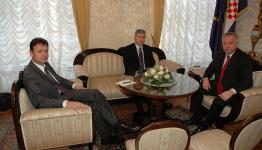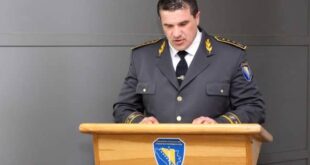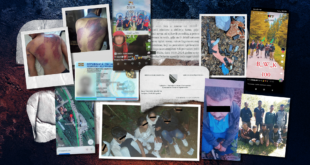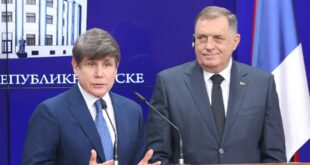 The strongest Bosnian Croat parties, the Croat Democratic Union, HDZ, and the renegade HDZ1990, inch towards reunification, with HDZ 1990 leadership expected to start discussing this issue on Thursday.
The strongest Bosnian Croat parties, the Croat Democratic Union, HDZ, and the renegade HDZ1990, inch towards reunification, with HDZ 1990 leadership expected to start discussing this issue on Thursday.
“One person cannot decide on the modalities of unification… party organs are the ones to take key decisions,” local media reported on Thursday, quoting HDZ1990 president Bozo Ljubic.
Ljubic made his comments after the process for reunification of the two Bosnian HDZ parties was officially initiated and strongly supported by the Croatian Premier Ivo Sanader, two days ago.
Eventual reunification of HDZ and HDZ1990 would reinforce Bosnian Croat negotiating positions. This process, and Sanader’s role in it, also shows a renewed strengthening of Croatian involvement in the Bosnian Croat political scene.
HDZ in Bosnia and Herzegovina was established during the violent break-up of former Yugoslavia in the 1990s, and worked as an almost integral part of the Croatian HDZ party. However, their relations slowly started to deteriorate and the parties started to grow apart following the death in 1999 of the late Croatian president and HDZ founding leader, Franjo Tudjman.
Ivo Sanader, now leader of the Croatian HDZ and new Croatian Premier, appeared significantly less hard-line than Tudjman and eventually managed a thorough reform of his party. At that time, the HDZ in Bosnia remained more radical and continued pushing for a separate Bosnian Croat entity.
After most of the war-time Bosnian Croat hard-liners had left HDZ, the weakened and somewhat less radical party was taken over in 2006 by Dragan Covic. In the same year, another senior HDZ leader, Bozo Ljubic, and a group of his followers split from HDZ, forming their own HDZ1990.
There were almost no political or ideological differences between the two parties, and the split appeared to be motivated purely by growing personal differences that were further escalated after Covic defeated Ljubic in their close race for the new HDZ presidency.
But, analysts say, Bosnian Croats have paid a high price for this split. With less than an estimated 15 per cent of the overall population, Bosnian Croats are the smallest of the three main ethnic groups in the country; as such, they have already been occasionally outvoted in some of the local, regional and state bodies.
Following the split, HDZ sided with the strongest Bosniak (Bosnian Muslim) Party of Democratic Action, SDA, while HDZ1990 aligned with the second-strongest Bosnian Party for Bosnia and Herzegovina, SZBH. This situation split Bosnian Croat votes even more, especially after the 2008 election defeat of SZBH and HDZ1990, and led to further marginalization of their interests.
Concerned by this situation, both local Roman Catholic leaders and the Croatian leadership appealed for reunification of Bosnian Croat top politicians.
While most of the senior members of the weakening HDZ1990 appeared in favour, Bozo Ljubic remained the main obstacle, sources close to the party leadership said.
That final obstacle appeared to be overcome on Tuesday during the visit of Croatian Premier Ivo Sanader to a regional business fair in the southern town of Mostar. He used the occasion to hold separate talks with the leadership of both parties.
After the meeting, sources close to both parties said that the modalities of reunification and the process itself should be completed within the next couple of months. This development could hopefully help improve and simplify Bosnia’s entangled political scene, analysts say.
 Eurasia Press & News
Eurasia Press & News


